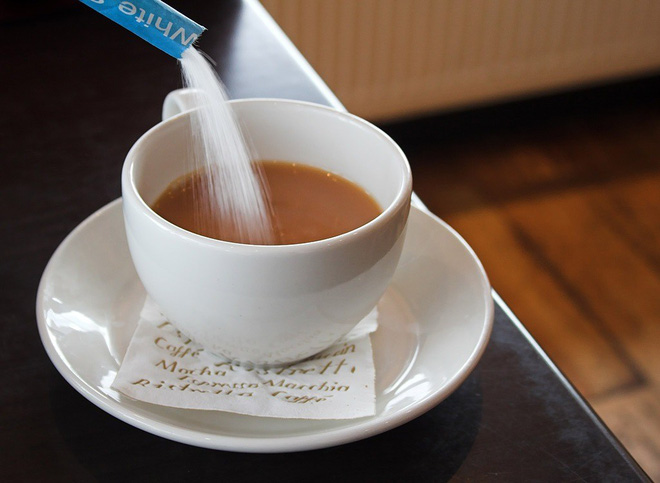A sweet tooth isn’t the only reason we add a little sugar to our coffee or tea. Scientists believe that sugar plays a crucial role in reducing bitterness through basic chemical interactions.
Coffee is famous for its characteristic bitter taste, which comes from caffeine and a series of other organic substances formed during the roasting process. Depending on taste, some people love the pure bitter taste, but most people choose to add a little sugar to balance the taste.
In Vietnam, filter coffee mixed with white sugar, or iced milk coffee with condensed milk has become a national drink. Around the world, from cappuccino, latte to Spanish café bombón, sugar and milk always go hand in hand with coffee.
So why can small grains of sugar completely change the taste experience?

A recent study published in the Food and Function Journal has provided new insights into how caffeine, sugar, and water interact at the molecular level to affect the taste of hot beverages.
Caffeine plays a part in causing bitterness. Caffeine molecules tend to stick together in water, and adding a little sugar makes them stickier. Decades ago, some scientists hypothesized that this was due to the strengthening of the bonds between water molecules around the sugar.
However, according to research by Seishi Shimizu, conducted at the York Structural Biology Laboratory, University of York, the underlying cause is the relationship between sugar molecules and water, which causes caffeine molecules to stick together to avoid sugar. This is the reason why we often feel less bitter when we add sweeteners to our coffee. A correct understanding of this issue will help food experts in many aspects.
Shimizu also used statistical thermodynamics (a branch of theoretical physics) to understand the molecular workings and interactions behind everyday foods. “It’s exciting that questions about food and drink can be addressed using theories, simply with a pencil and paper,” he revealed.
This research not only helps us understand more about our morning cup of coffee, but also opens up many practical applications.
- For consumers: Explains why just a little sugar is enough to make a cup of coffee less harsh, easier to drink, especially for those who are not used to the strong bitter taste of espresso or dark roast coffee.
- For the food industry: This knowledge can be applied in the development of “less bitter” coffee products without adding too much sugar, or even replacing it with substances with similar properties. This is in line with the trend of reducing sugar to protect health.
- In beverage research: Understanding the mechanism of molecular interactions opens up new directions for balancing natural flavors, not only with coffee but also with tea, cocoa or other beverages.

Of course, the study has its limitations. The analysis was done on a pure solution of caffeine, sugar, and water. The actual cup of coffee contains hundreds of different compounds: chlorogenic acid, melanoidins, aromatic compounds, etc. All of which can affect the bitterness and overall taste.
In addition, factors such as brewing temperature, pH, type of sugar used, and roasting of the coffee beans can also alter the results. Therefore, more research is needed to fully understand how sugar affects the full complexity of coffee flavor.
Vietnam is one of the world’s largest coffee consumers and is famous for its iced coffee – a combination of strong coffee and sweetened condensed milk. The habit of adding sugar or milk has become a cultural characteristic.
From a scientific perspective, it can be seen that this habit is not only to satisfy the palate, but also reflects a natural mechanism: reducing the very strong bitterness of Robusta coffee – the most popular bean in Vietnam.
Reference:
- Seishi Shimizu (2015). Caffeine dimerization: effects of sugar, salts, and water structure. Food & Function Journal.
- University of York News (2015). Sweet science: Sugar’s role in reducing coffee bitterness.
